Abstract
An ELISA method has been developed for the diagnosis of Plasmodium falciparum infection in man. Parasites from in vitro cultures of P. falciparum were used as source of antigen for the solid phase and the source of specific antibody was immune Gambian sera; binding of antibody in antigen-coated wells was registered by means of alkaline phosphatase-conjugated anti-human IgG. Parasites were detected on the basis of inhibition of antibody-binding. The test was applied to the detection of parasites in human red blood cells (RBC) from in vitro cultures of P. falciparum and in RBC from infected Gambians; RBC from 100 Geneva blood donors served as normal, uninfected controls. In titration experiments, the degree of antibody-binding inhibition correlated with the number of parasites in the test RBC. Parasites were detected at a level of 8 parasites/106 RBC. Samples of RBC were tested from 126 Gambians with microscopically proven infection; significant antibody-binding inhibition was found in 86% of these cases, where parasitaemia ranged from 10 to 125 000/μl of blood. The presence of high-titre antibody in the test preparations was found to reduce the sensitivity of parasite detection in infected RBC from in vitro cultures mixed with equal volumes of different antibody-containing sera. The sensitivity was restored in most cases by recovering the RBC by centrifugation before testing. In a preliminary experiment, there was no significant difference in antibody-binding inhibition using fresh infected RBC and RBC dried on filter-paper and recovered by elution, although there was greater variation in the latter samples.
Full text
PDF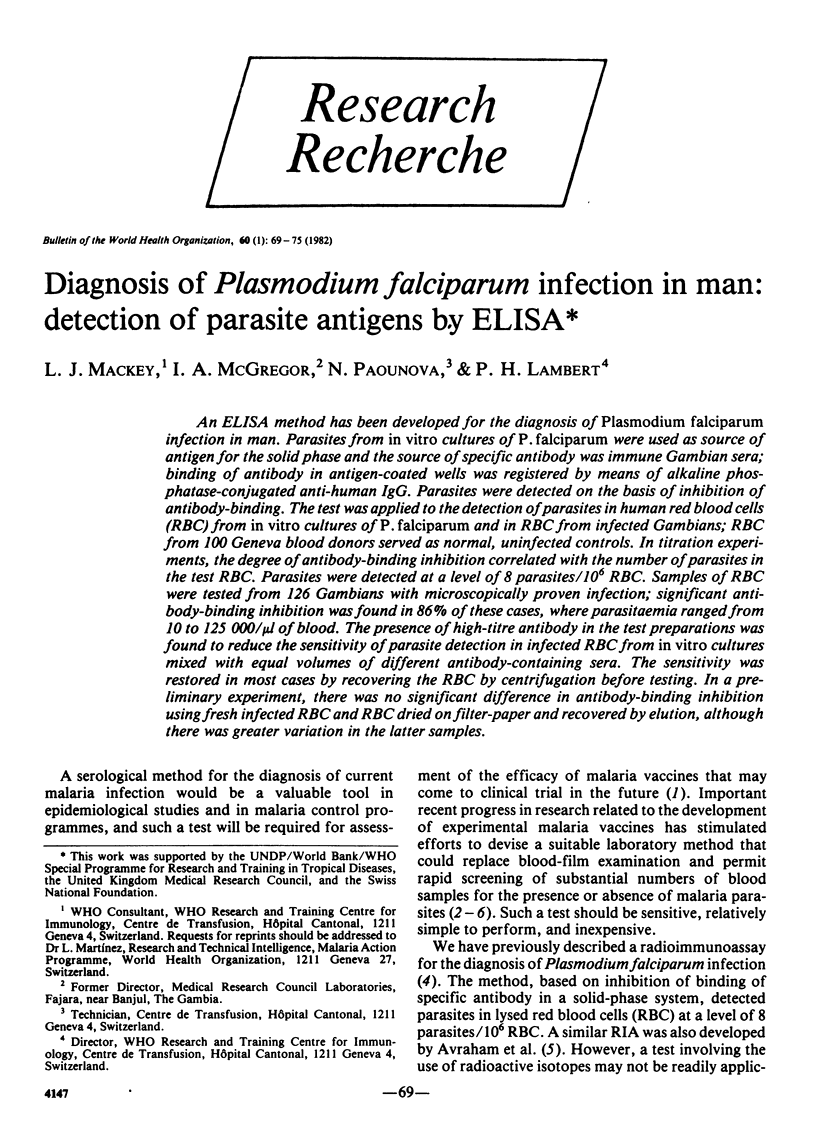
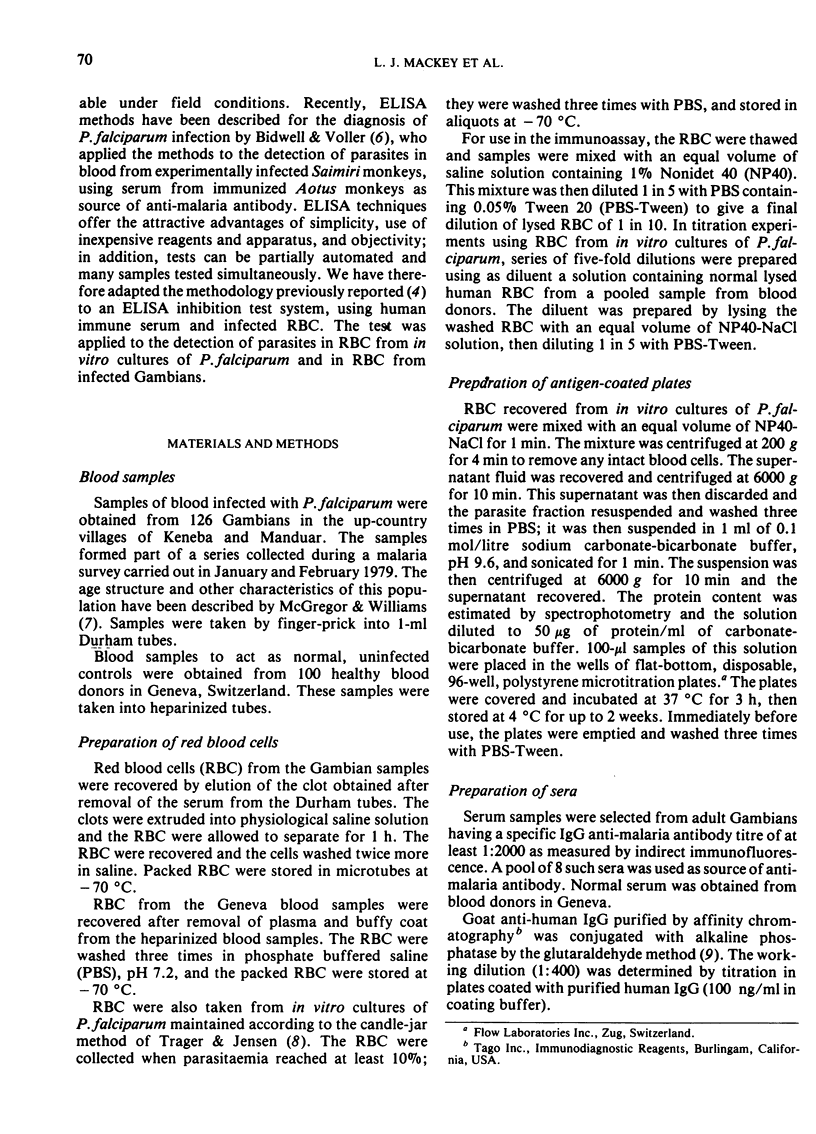
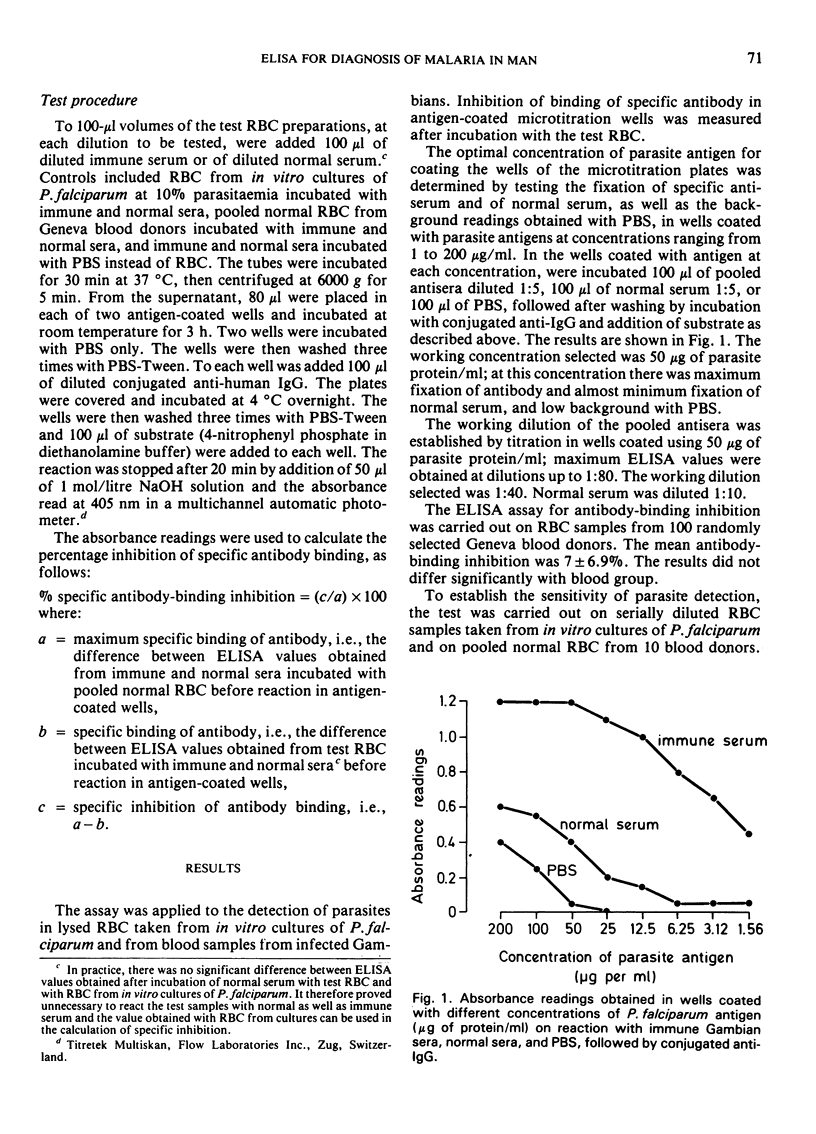
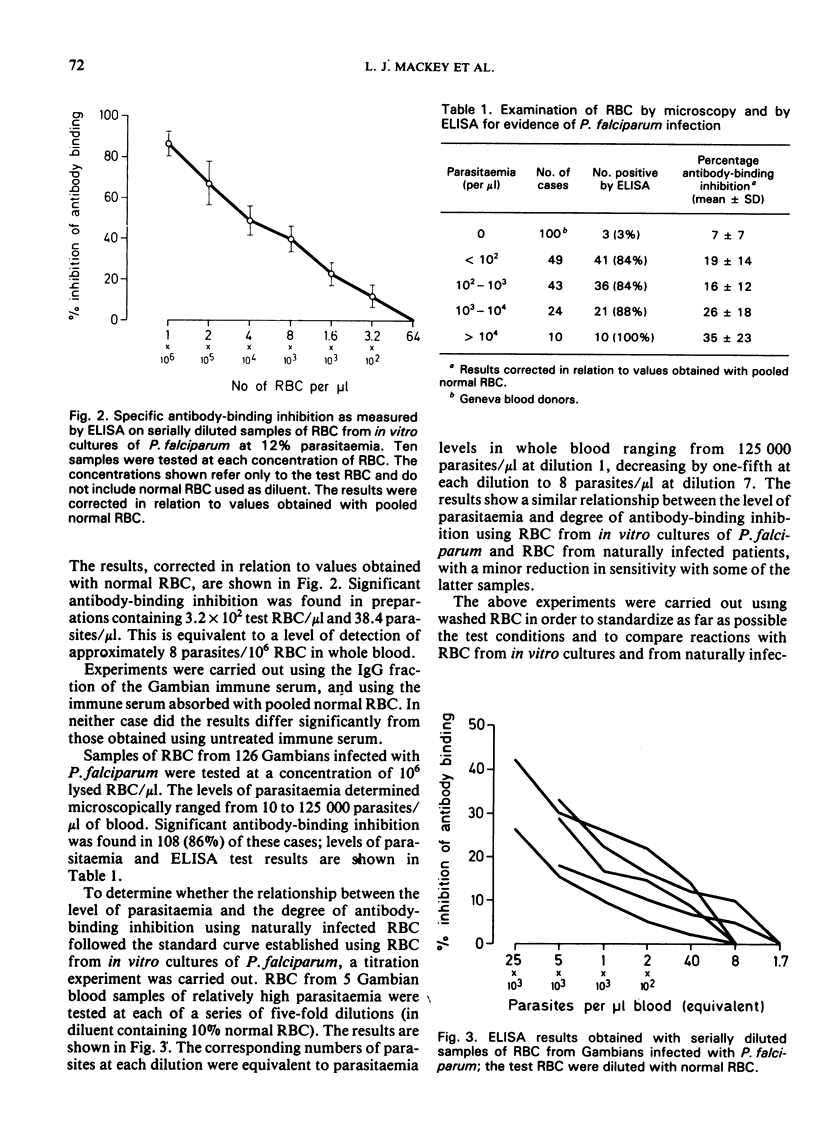
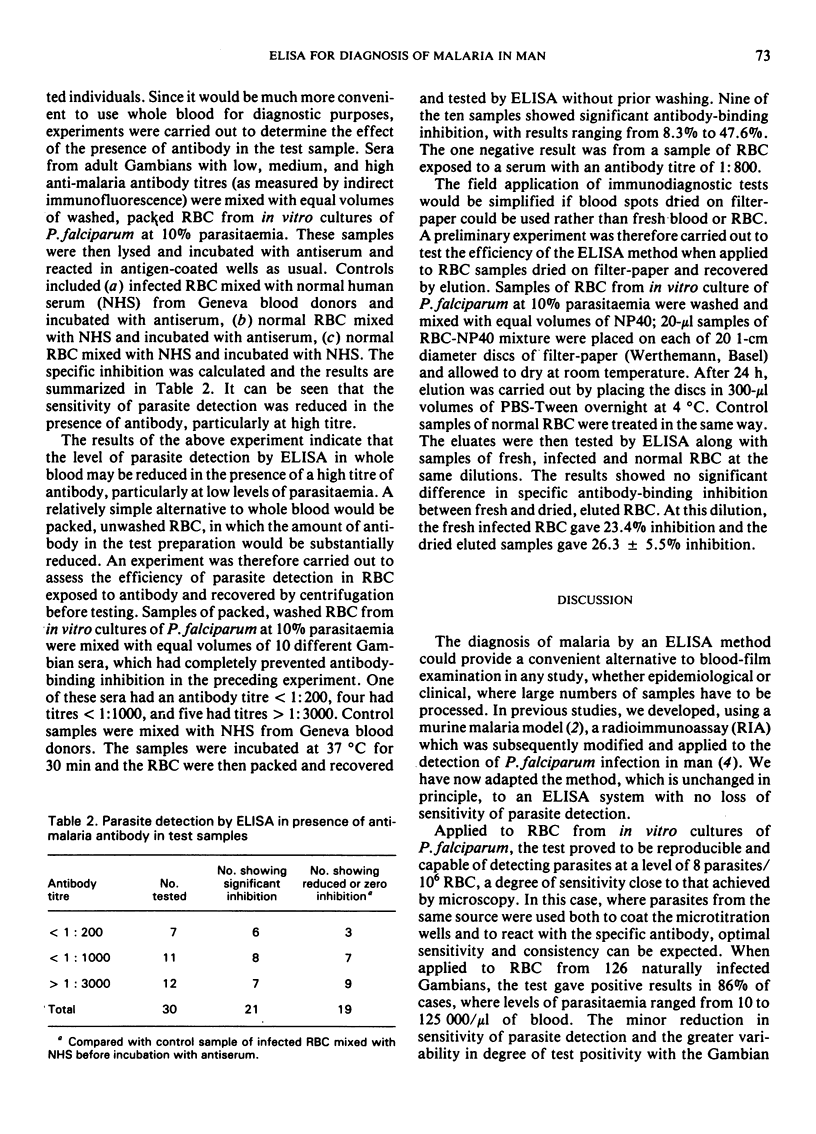
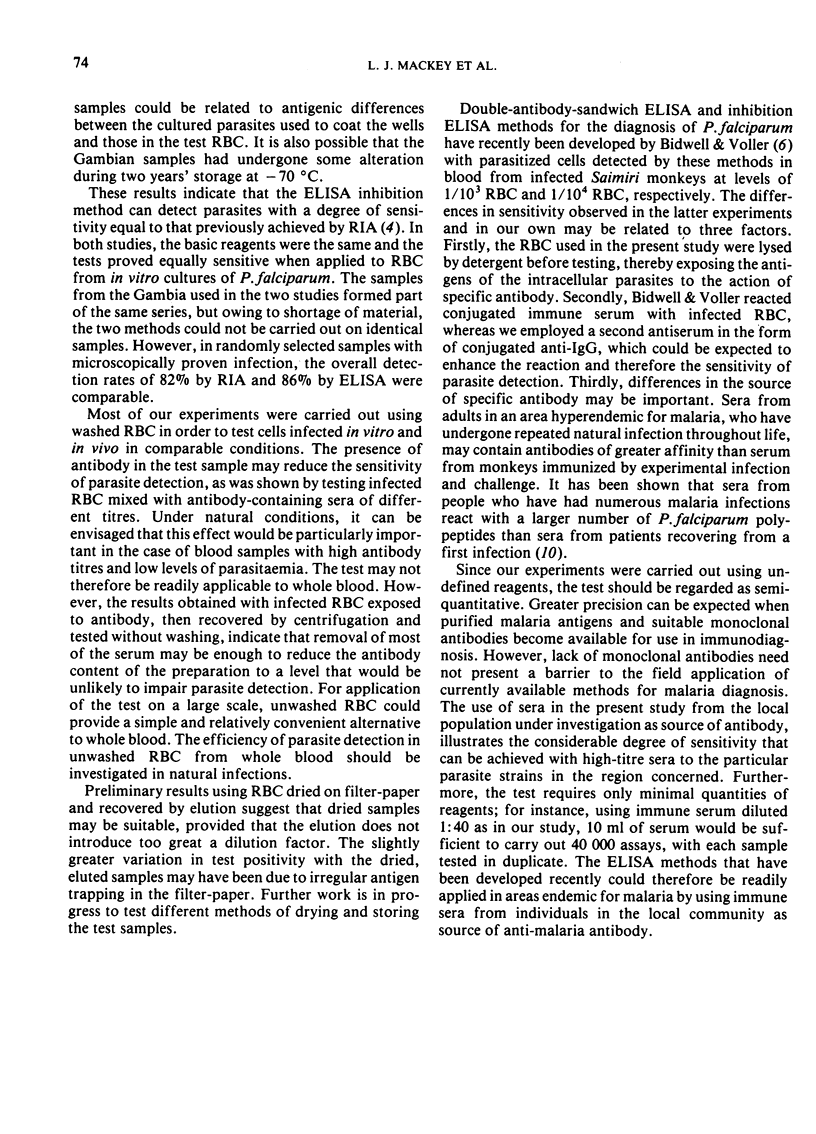
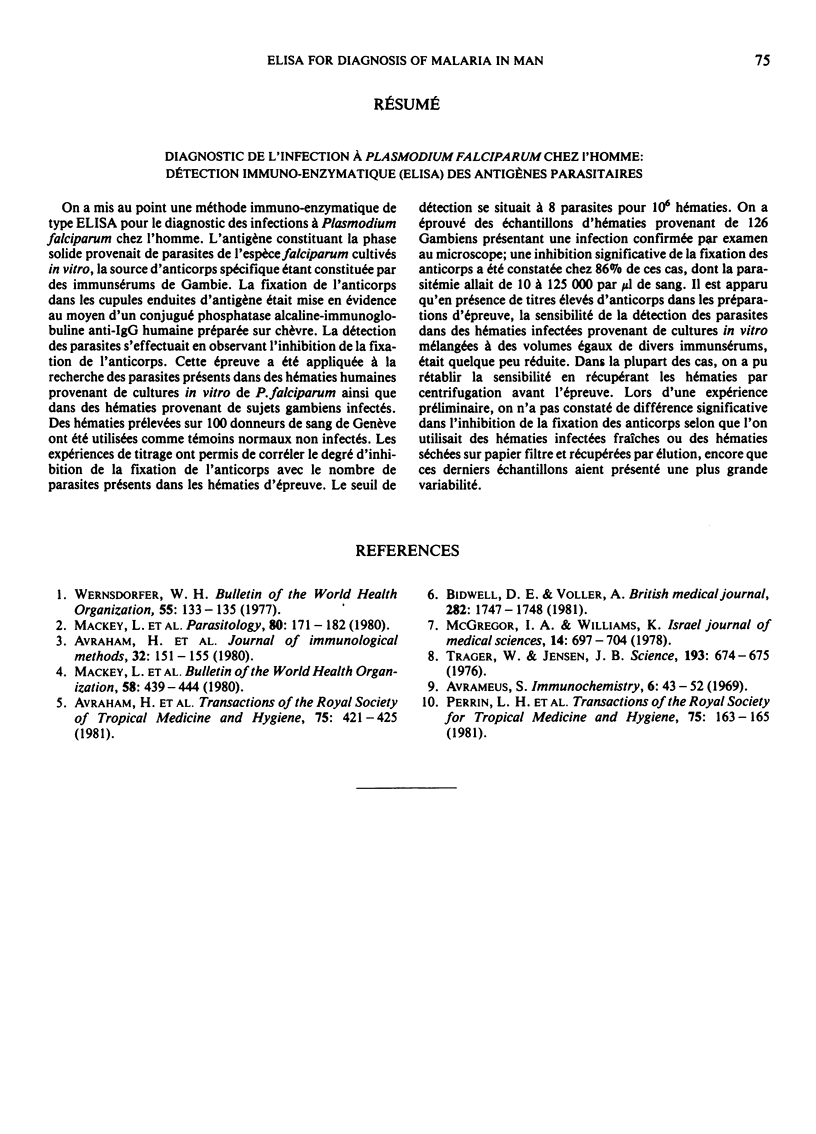
Selected References
These references are in PubMed. This may not be the complete list of references from this article.
- Bidwell D. E., Voller A. Malaria diagnosis by enzyme-linked immunosorbent assays. Br Med J (Clin Res Ed) 1981 May 30;282(6278):1747–1748. doi: 10.1136/bmj.282.6278.1747. [DOI] [PMC free article] [PubMed] [Google Scholar]
- Mackey L., Perrin L., Leemans E., Lambert P. H. The diagnosis of malaria infection using a solid-phase radioimmunoassay for the detection of malaria antigens. Application to the detection of Plasmodium berghei infection in mice. Parasitology. 1980 Feb;80(1):171–182. doi: 10.1017/s0031182000000639. [DOI] [PubMed] [Google Scholar]
- McGregor I. A., Williams K. Value of the gel-precipitation test in monitoring the endemicity of malaria in a rural African village. Isr J Med Sci. 1978 Jun;14(6):697–706. [PubMed] [Google Scholar]
- Trager W., Jensen J. B. Human malaria parasites in continuous culture. Science. 1976 Aug 20;193(4254):673–675. doi: 10.1126/science.781840. [DOI] [PubMed] [Google Scholar]
- Wernsdorfer W. H. The relevance of research to the global antimalaria programme. Bull World Health Organ. 1977;55(2-3):133–135. [PMC free article] [PubMed] [Google Scholar]


